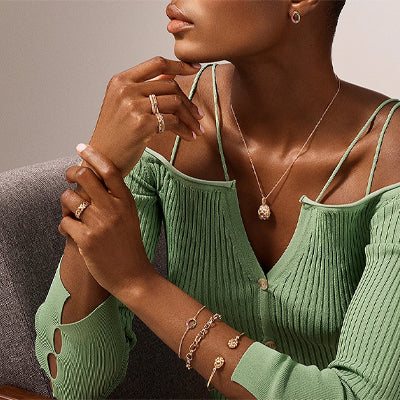Los huevos imperiales
La famosa serie de 50 huevos de Pascua Imperiales fue creada para la familia imperial rusa desde 1885 hasta 1916, cuando la empresa estaba dirigida por Peter Carl Fabergé . Estas creaciones están indisolublemente ligadas a la gloria y al trágico destino de la última familia Romanov. Fueron el máximo logro de la famosa casa de joyería rusa y también deben considerarse los últimos grandes encargos de objetos de arte. Se produjeron diez huevos entre 1885 y 1893, durante el reinado del emperador Alejandro III; se crearon 40 más durante el gobierno de su obediente hijo, Nicolás II, dos cada año, uno para su madre, la viuda, el segundo para su esposa.
La serie comenzó en 1885, cuando el emperador Alejandro III, a través de su tío, el gran duque Vladimir, encargó a Fabergé un huevo de Pascua como regalo de Pascua para su esposa, la emperatriz María Feodorovna. Inicialmente, Fabergé planeó que contuviera un anillo de diamantes, pero la versión final, siguiendo instrucciones específicas del emperador, incluía un colgante de rubí de gran valor. Después del primer encargo, Fabergé fue nombrado "orfebre por nombramiento especial de la Corona Imperial", y la leyenda continuó durante los siguientes 31 años. Según la tradición familiar Fabergé , la empresa recibió total libertad para los futuros Huevos de Pascua Imperiales. Ni siquiera el emperador sabía qué forma adoptarían. La única condición era que cada uno debía contener una sorpresa.
Los huevos imperiales
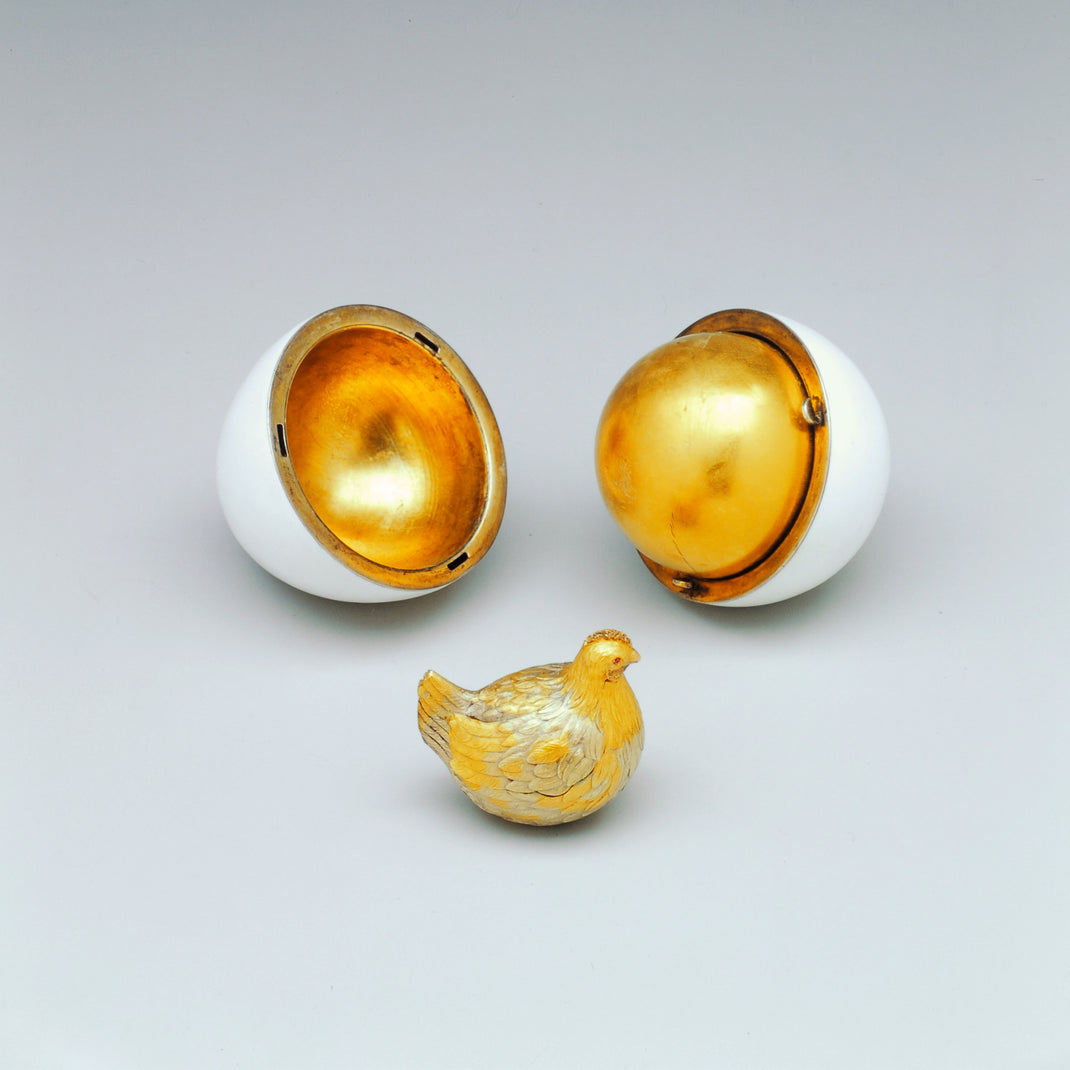
Image courtesy of the Forbes Collection
1885
The Hen Egg
Inspired by an 18th century original, the Hen Egg has an opaque white enamelled outer ‘shell’, opening with a twist to reveal a first surprise - a matt yellow gold yolk. This in turn contains an enamelled chased gold hen that once held a replica of the Imperial Crown with a precious ruby pendant egg within. The drop by itself cost more than half of the egg’s total price (both lost, being only known from an old photograph).
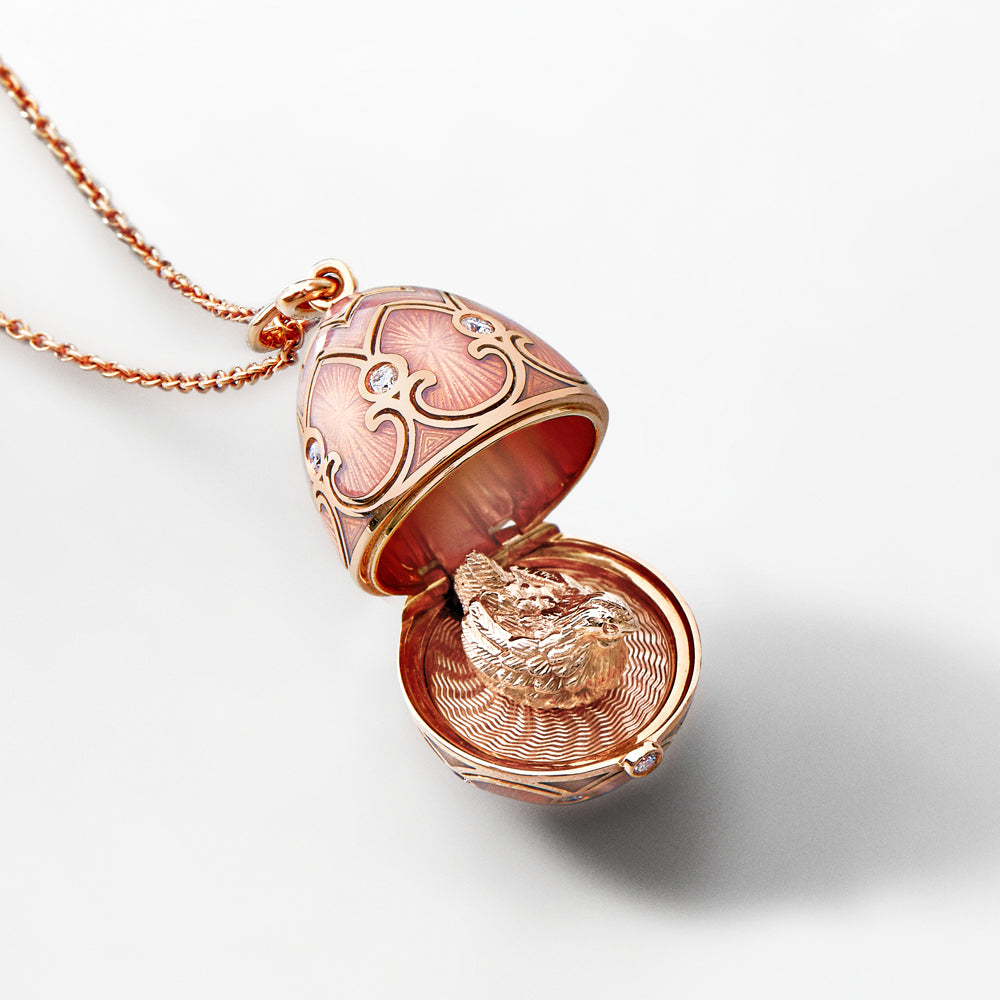
Heritage Collection
Heritage Hen Locket
The Heritage collection draws inspiration from Fabergé’s historical masterpieces. Traditional materials and complex traditional techniques, such as the delicate art of guilloché enamelling and hand-engraving, make up the signature elements of this colourful and opulent collection.
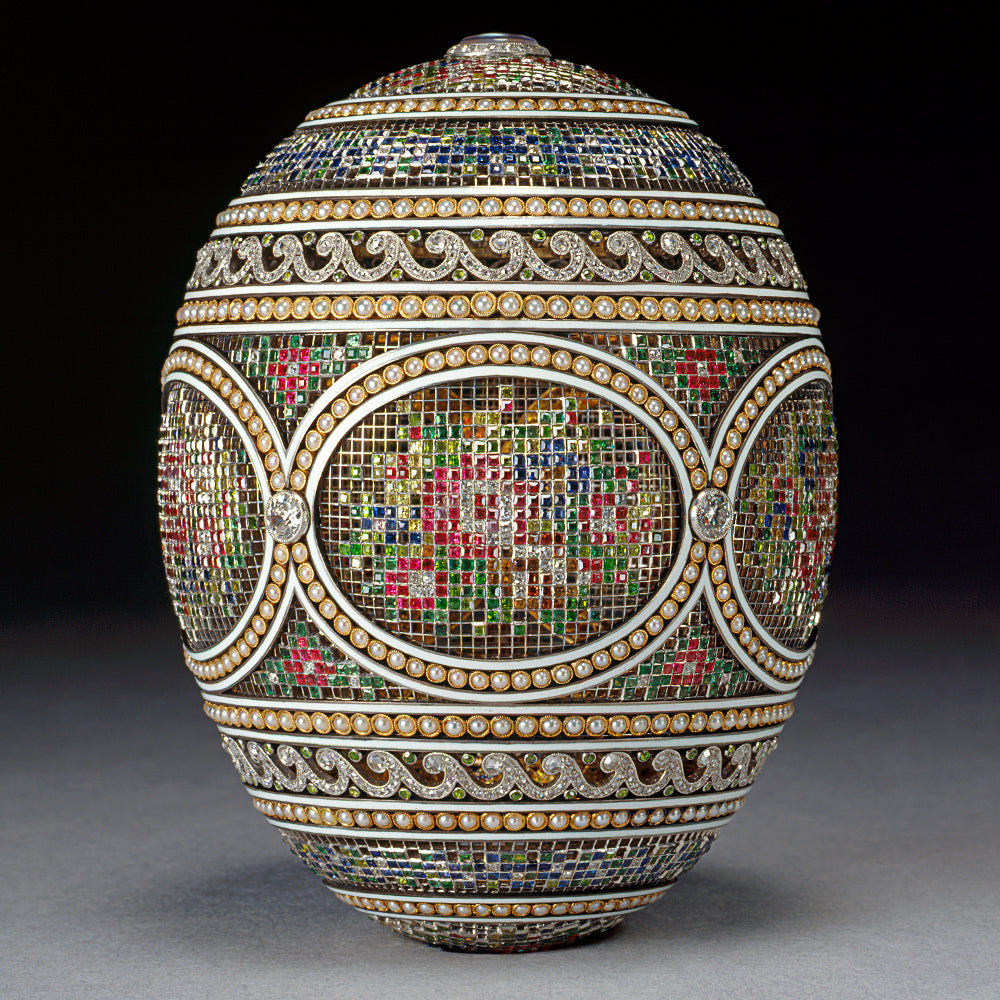
Image courtesy of the Getty Images
1914
The Mosaic Egg
The Mosaic Egg is a triumph of technical brilliance and artistic finesse. Commissioned by Tsar Nicholas II for Empress Alexandra, it features a delicate micro-mosaic of precious gems set in platinum to resemble petit point embroidery. Designed by Alma Theresia Pihl, the egg’s intricate beauty is matched by its heartfelt surprise—a miniature portrait of the imperial children—making it one of the most cherished treasures of the Imperial Fabergé collection.
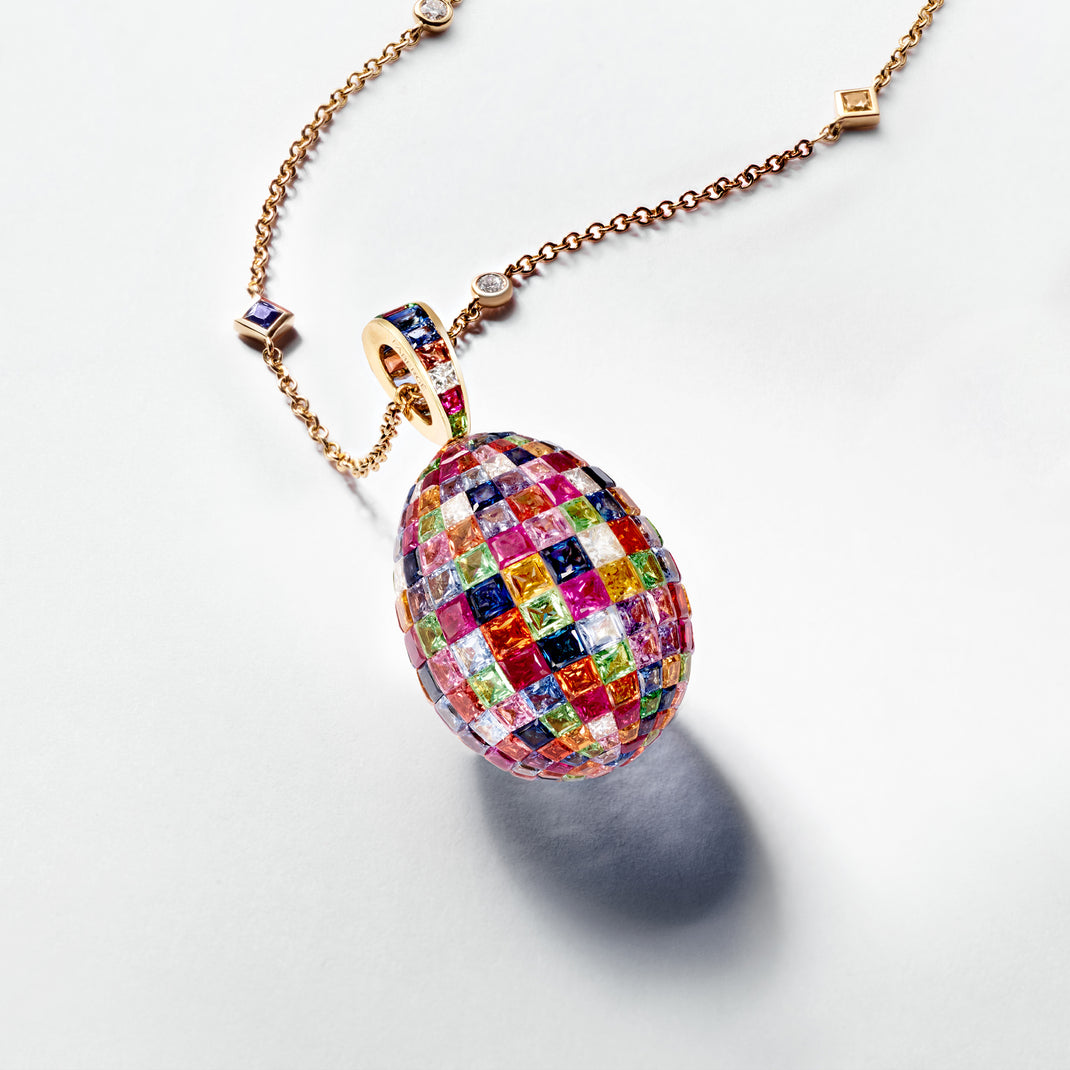
Imperial Collection
Mosaic Egg Pendant
In a compelling mix of impeccable craftsmanship and the finest gemstones, the Fabergé Imperial collection celebrates rhythms of the seasons. Exceptional white diamond, pearl and coloured gemstone pieces demonstrate the superlative Fabergé hand artisanship.
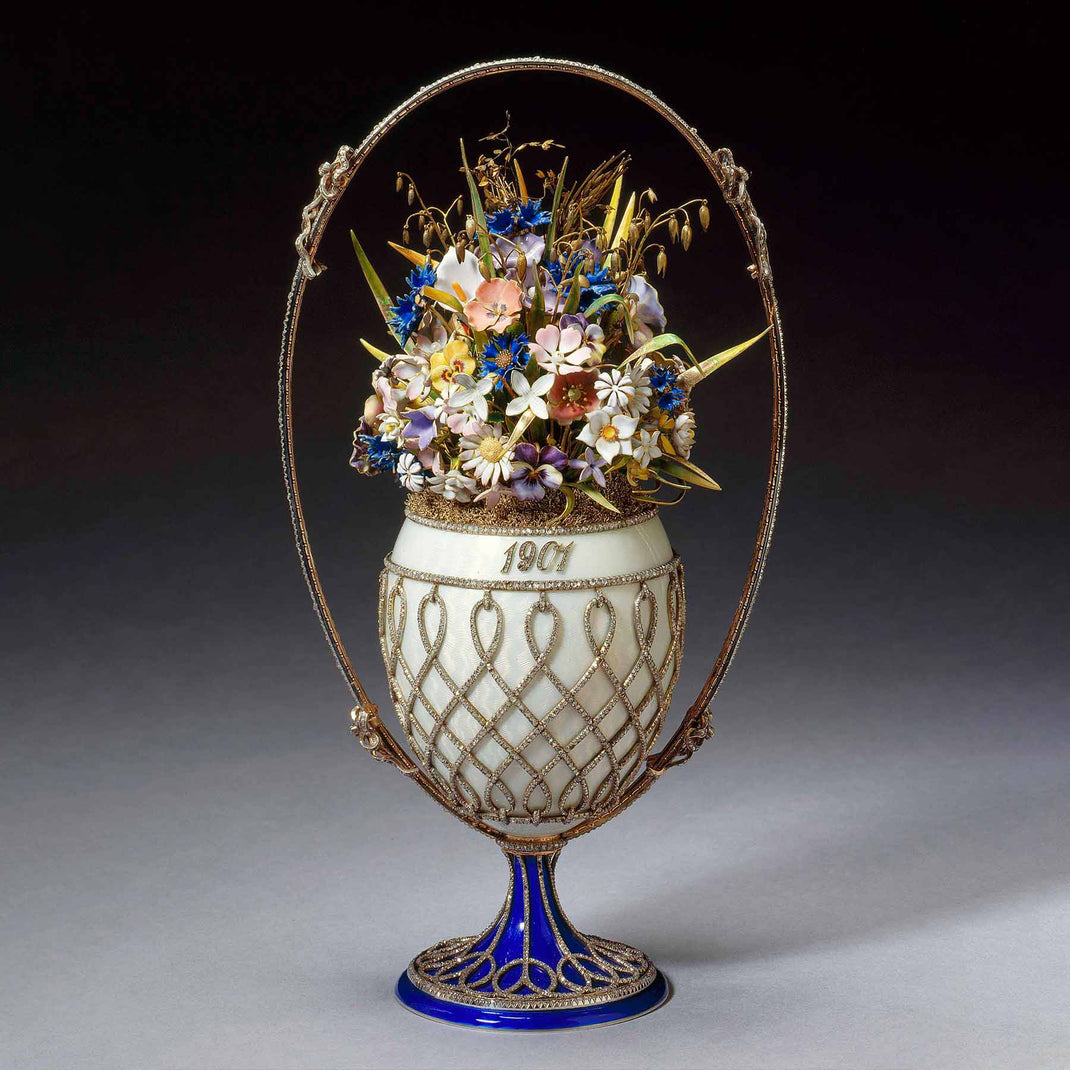
Image courtesy of The Royal Collection
1901
The Basket of Flowers Egg
Imperial Easter egg, basket-shaped, silver-gilt and oyster guilloché enamel mounted with rose diamond trellis and oval handle with four bows, blue enamel splayed base with rose diamond trellis. Egg contains wild flowers, leaves and husks of enamel on gold. The Tsarina kept the egg in her study at the Winter Palace. Each of the 50 Imperial Easter Eggs made by Fabergé was unique, its design and execution of the highest possible standard using the finest raw materials. The bouquet of wild spring flowers would have particularly appealed to Tsarina Alexandra, who owned several of Fabergé’s flower studies.
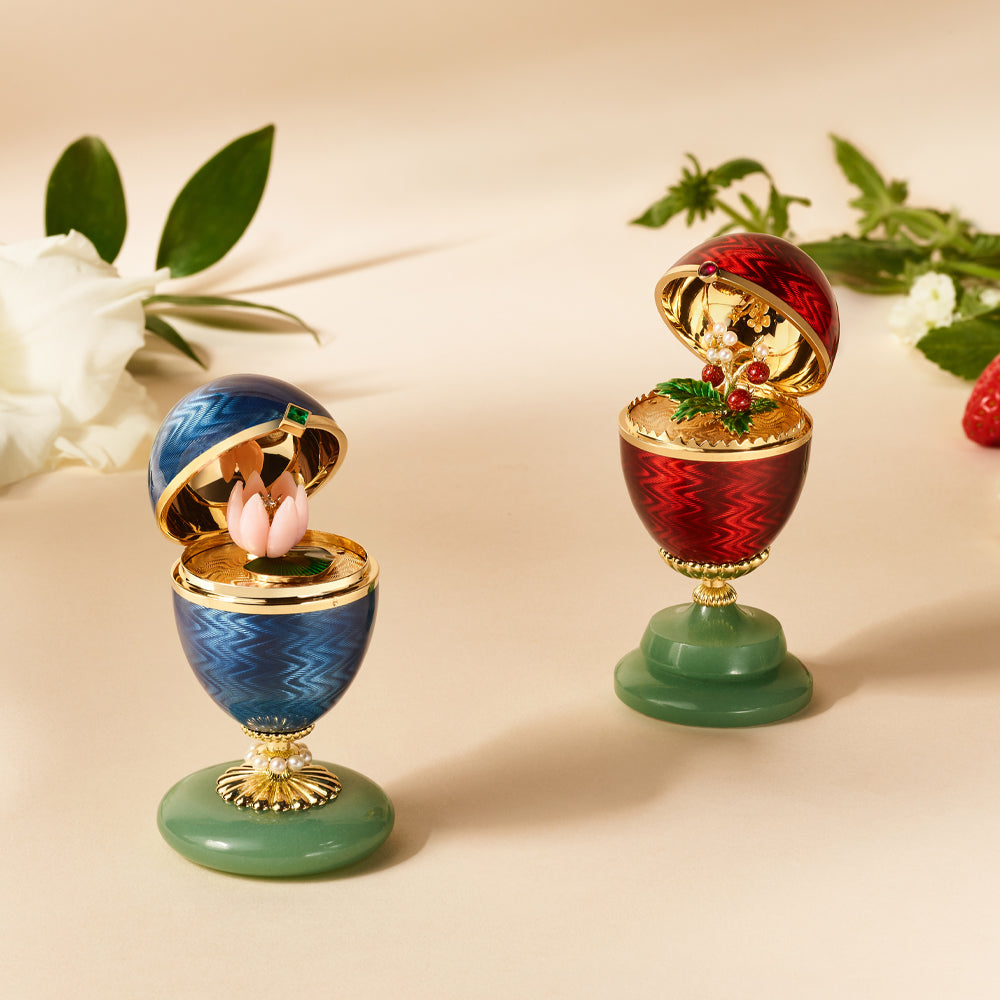
Heritage
In Bloom
Introducing two limited-edition eggs to our objet d’art collection, which pay homage to our rich heritage, fusing the iconic egg with the iconic flower studies for which Peter Carl Fabergé was renowned. The Fabergé Wild Strawberry Egg and Fabergé Water Lily Egg are each destined to become future heirlooms and - limited to just 10 numbered editions per design - are collectors’ pieces which truly celebrate the beauty of nature and the past, present, and future of Fabergé.
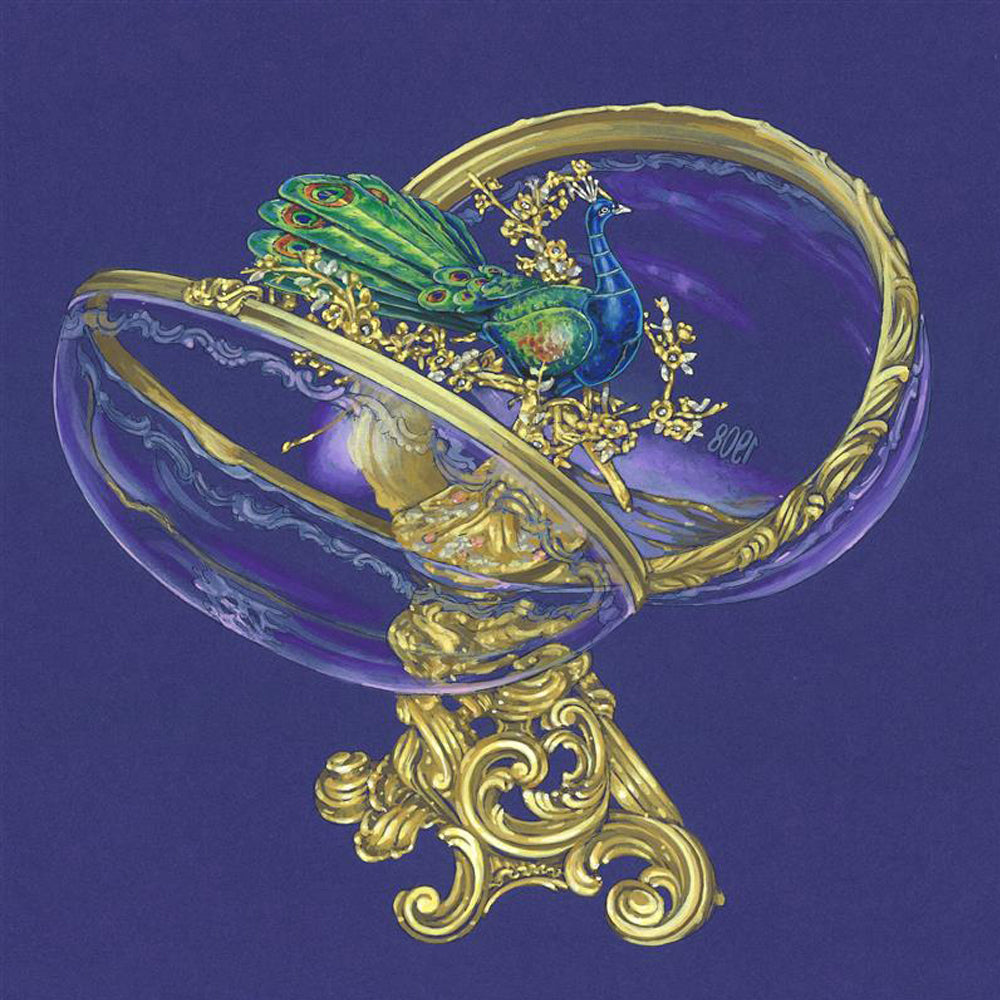
1908
The Peacock Egg
The Peacock Egg features a transparent egg, placed horizontally, both its halves carved from rock crystal, each set into a heavy mount with a clasp. One half is inscribed with the monogram of Maria Fedorovna, the other with the year 1908. Inside, a peacock in multi-color enamel is poised amid the branches of a golden tree, strewn with flowers of precious stones and enamel. The mechanical bird can turn its head and spread its tailfeathers.
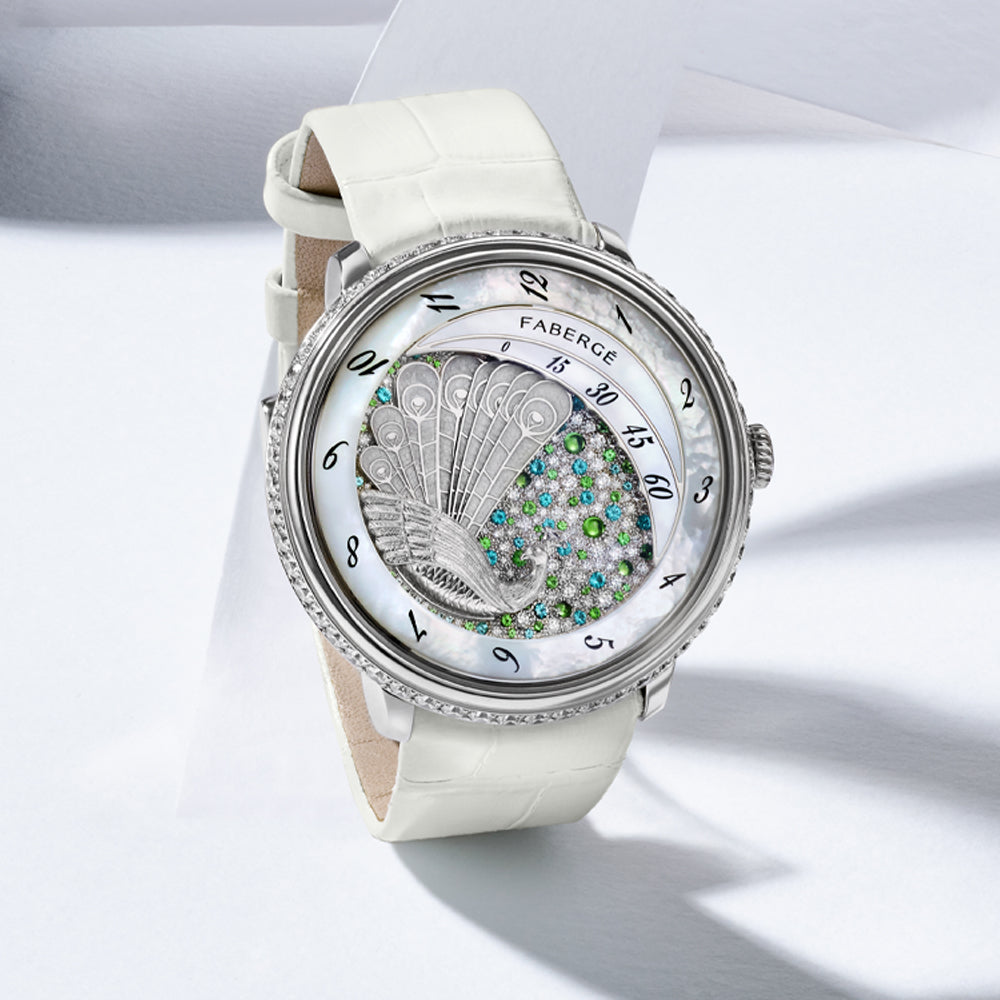
Compliquée
Peacock Watch
The Compliquée Haute Horlogerie collection upholds Peter Carl Fabergé’s tradition of surprise and meticulous execution with a new and spectacular time display, which won the prestigious 2015 Grand Prix d’Horlogerie de Genève (GPHG) – the Swiss watchmaking industry’s highest honour – in the ‘High-Mechanical’ category. The highly original display of the collection features a fan at the heart of the watch, a movement exclusively developed for Fabergé by Agenhor Manufacture. It thus perpetuates the ingenious and freethinking spirit of Peter Carl Fabergé; the display in the Compliquée Peacock timepiece pays homage to the famous “Peacock Egg” of 1908.


















